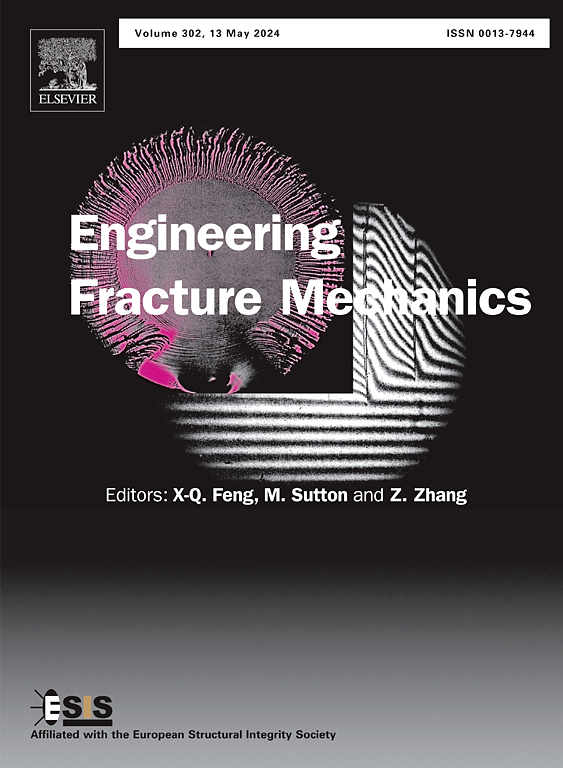Crack growth analysis of shear deformable plate under bending and tension
IF 4.7
2区 工程技术
Q1 MECHANICS
引用次数: 0
Abstract
This paper presents a method for fatigue crack growth path prediction by using the Displacement Discontinuity Method (DDM) in shear deformable plate bending and tension. A novel crack extension segment technique is introduced to model crack growth path and the stress intensity factors at the crack tip are captured using the equivalent stress technique. All stress intensity factors (three for bending and two for in-plane loads) are evaluated accurately using the equivalent stress algorithm. The Paris law and the maximum principal stress criterion are adopted to define the growth rate and direction of the fatigue crack growth, respectively. The constant crack length increment with tangential approach is utilized in all numerical examples. Validations are demonstrated with ABAQUS for the numerical examples with an edge crack under combination of out-of-plane plate bending and in-plane tensile loads.
求助全文
约1分钟内获得全文
求助全文
来源期刊
CiteScore
8.70
自引率
13.00%
发文量
606
审稿时长
74 days
期刊介绍:
EFM covers a broad range of topics in fracture mechanics to be of interest and use to both researchers and practitioners. Contributions are welcome which address the fracture behavior of conventional engineering material systems as well as newly emerging material systems. Contributions on developments in the areas of mechanics and materials science strongly related to fracture mechanics are also welcome. Papers on fatigue are welcome if they treat the fatigue process using the methods of fracture mechanics.

 求助内容:
求助内容: 应助结果提醒方式:
应助结果提醒方式:


